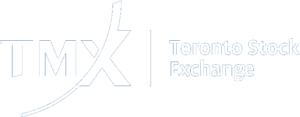
Reforestation
Cormier Property, Shmeogue Botsford Region, New Brunswick, Canada
Click to enlarge image
During October of 2022 SRC planted 32,089 trees on company land which resulted in a carbon sequestration calculation of 10X the total of the company’s 2022 carbon dioxide emissions from all sources.
Cormier Property, Shmeogue Botsford Region, New Brunswick, Canada
| Overall Size: | 33.30 acres | 13.48 hectares | |
| Latitude: | 46.18819 | Longitude: | -64.25862 |
| PAN | 6767325 | PID | 841841 |
| (Property Account Number) | (Parcel Identification Descriptor) |
GeoNB website https://geonb.snb.ca/geonb/
In 2022 Sustainable Resources Corporation purchased 33.30 acres of clear-cut land in the Shmeogue Botsford Region of New Brunswick, Canada. The land had been cleared for logging by another party. Sustainable Resource Corporation undertook planting of 32,089 trees in a rewilding process. The land will remain on the company’s balance sheet with a natural rewilding using indigenous species.
Cormier Property, Shmeogue Botsford Region, New Brunswick, Canada
Tree Types & Quantities Planted in 2022
Additional Indigenous Species on the Property
CO₂ Sequestration Calculation for 2022
| Tree Type | Trees Planted |
Sequestered Carbon |
Tonnes CO₂ Sequestered |
| Red Spruce | 18,900 |
400 Kg CO₂/tree |
7,560 T. CO₂ |
| Eastern White Pine | 9,350 |
400 Kg CO₂/tree |
3,740 T. CO₂ |
| White Spruce | 3,836 |
400 Kg CO₂/tree |
1,534 T. CO₂ |
| TOTAL | 32,086 |
400 Kg CO₂/tree |
* 12,834 Tonnes CO₂ |
* Estimated Total CO₂ Sequestration ~ 12,834 Tonnes CO₂
Sustainable Resource Corporation: Scope 1, 2 & 3 Emissions Calculation
CO₂ Emissions Calculation for 2022 (Tonnes CO₂)
| Emissions Type | Q1.2022 | Q2.2022 | Q3.2022 | Q4.2022 | 2022 |
| Scope 1 | 62.3 T | 58.9 T | |||
| Scope 2 | 0 T | 0 T | |||
| Scope 3 | 226.1 T | 215.6 T | |||
| TOTAL | 288.3 T | 274.5 T | * 1,100 T |
* Estimated Total Annual CO₂ Emissions ~ 1,100 Tonnes CO₂
The World Resource Institute’s greenhouse gas protocol (GHG Protocol) establishes a framework for calculating Scope 1, 2 and 3 carbon emissions. The framework for classifying carbon emissions can be summarized as follows:
SCOPE 1
Direct
- Fuel Combustion
- Company Vehicles
- Fugitive Emissions
SCOPE 2
Supporting Activities
- Purchased Electricity
- Heat & Steam
- Retail Logistics Fleet
SCOPE 3
Suppliers & Contractors
- Purchased Goods & Services
- Business Travel
- Employee Commuting
- Waste Disposal
- Use of Solid Products
- Transport & Distribution (Upstream / Down)
- Investments
- Leased Assets & Franchises
Scope 1 emissions are direct greenhouse (GHG) emissions that occur from sources that are controlled or owned by an organization (e.g., emissions associated with fuel combustion in boilers, furnaces, vehicles).
Scope 2 emissions are indirect GHG emissions associated with the purchase of electricity, steam, heat, or cooling. Although scope 2 emissions physically occur at the facility where they are generated, they are accounted for in an organization’s GHG inventory because they are a result of the organization’s energy use.
Scope 3 emissions are the result of activities from assets not owned or controlled by the reporting organization, but that the organization indirectly impacts in its value chain. Scope 3 emissions include all sources not within an organization’s scope 1 and 2 boundary. The scope 3 emissions for one organization are the scope 1 and 2 emissions of another organization. Scope 3 emissions, also referred to as value chain emissions, often represent the majority of an organization’s total GHG emissions. Scope 3 emissions fall within 15 categories, though not every category will be relevant to all organizations. Scope 3 emission sources include emissions both upstream and downstream of the organization’s activities.
According to the GHG Corporate Protocol, all organizations should quantify scope 1 and 2 emissions when reporting and disclosing GHG emissions. While currently scope 3 emissions quantification is not required, more organizations are reaching into their value chain to understand the full GHG impact of their operations. In addition, because scope 3 emission sources may represent the majority of an organization’s GHG emissions, they often offer emissions reduction opportunities. Although these emissions are not under the organization’s control, the organization may be able to impact the activities that result in the emissions. The organization may also be able to influence its suppliers or choose which vendors to contract with based on their practices.


















